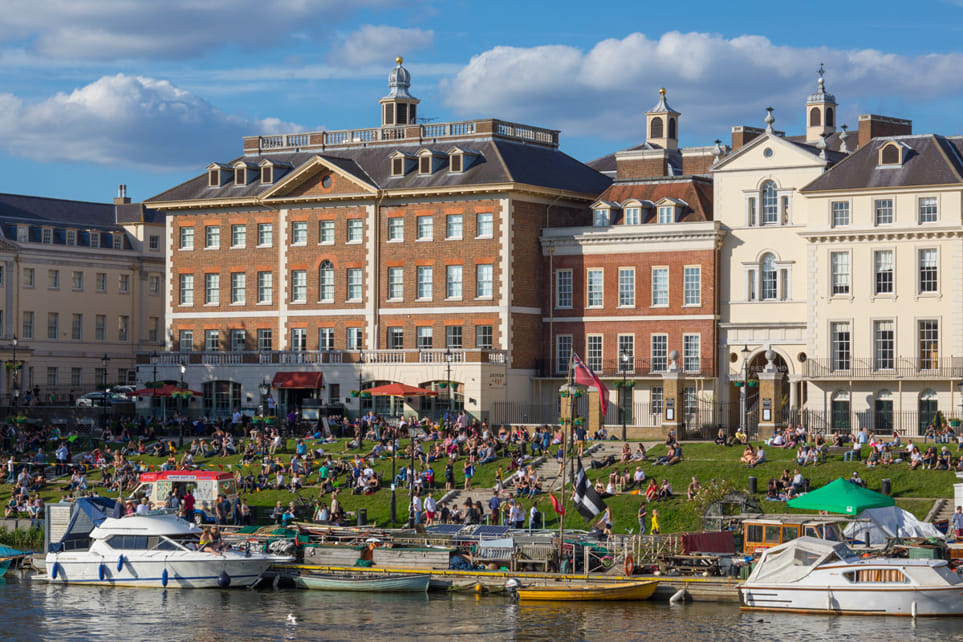A Unique Perspective on Richmond Riverside Planning Permission: What Every Homeowner and Developer Should Know
Nestled along the banks of the River Thames, Richmond Riverside is a picturesque locale celebrated for its stunning vistas, rich history, and architectural beauty. The area is not just a haven for nature lovers but also a sought-after destination for homeowners and developers looking to make their mark. However, embarking on any construction or renovation project in this vibrant community comes with its own set of challenges—primarily the complex web of planning permission regulations. This guide offers a fresh, in-depth exploration of navigating the intricacies of planning permission in Richmond Riverside, tailored specifically for those looking to undertake new projects.
The Essence of Richmond Riverside
Richmond Riverside is characterized by its charming blend of urban life and serene riverside landscapes. With historical landmarks, lush parks, and vibrant local culture, the area boasts a unique identity that makes it a coveted place to live and work. The architectural diversity, ranging from grand Victorian homes to contemporary developments, reflects the rich tapestry of the community.
This uniqueness, however, brings with it a responsibility to maintain the area’s charm and character. The Richmond upon Thames Council has implemented specific planning policies to protect these qualities, emphasizing the importance of obtaining the correct permissions before proceeding with any construction.
Planning Permission: Why It Matters
Planning permission is not merely a bureaucratic hurdle; it’s an essential aspect of community engagement and environmental stewardship. By ensuring that all development projects align with local guidelines, planning permission helps to:
- Preserve Heritage: Richmond Riverside is steeped in history, with numerous buildings listed for their architectural significance. Planning regulations ensure that these structures are preserved for future generations.
- Protect the Environment: The proximity to the River Thames introduces environmental considerations, such as flood risk management and the protection of local wildlife. Planning permission requires developers to consider these factors in their designs.
- Foster Community Cohesion: By reviewing development proposals, the council can ensure that new projects meet the needs of the community and contribute positively to the area.
Types of Planning Permissions You May Encounter
Understanding the types of planning permission required for your project is vital. Richmond Riverside has specific categories that you should familiarize yourself with:
1. Full Planning Permission
This is necessary for significant changes, including new builds or major renovations. Full planning applications require detailed plans and drawings that illustrate how your proposal fits into the existing landscape.
2. Householder Planning Permission
For homeowners considering extensions, loft conversions, or other alterations, householder planning permission applies. This streamlined process is designed to accommodate residential changes while maintaining neighborhood integrity.
3. Listed Building Consent
If your property is a listed building, you must obtain listed building consent for any changes. This ensures that the historical character of the building is preserved, requiring a deeper level of scrutiny from the council.
4. Conservation Area Consent
As Richmond Riverside is a conservation area, any significant alterations or demolitions may require additional consent. This emphasizes the need for developments to respect the area’s overall character.
The Planning Permission Application Process
Navigating the planning permission application process can seem daunting, but a clear understanding of the steps involved can ease the journey:
1. Initial Consultation
Before submitting an application, consider seeking advice from the Richmond upon Thames Planning Department. Engaging in a pre-application consultation allows you to gain valuable insights and feedback on your proposal, potentially saving time and resources later.
2. Prepare Comprehensive Documentation
The strength of your application hinges on the quality of your documentation. Key elements include:
- Site Plans: Clearly outline your project’s footprint and its relationship to neighboring properties.
- Design and Access Statement: Explain the design choices and how they enhance the surrounding area.
- Impact Assessments: Depending on your project’s scale, you may need to submit environmental or heritage impact assessments.
3. Submit the Application
Once your documentation is prepared, submit it through the appropriate channels, either online or via the council’s offices. Be sure to pay any associated fees, as applications will not be processed until payment is confirmed.
4. Public Consultation
After submission, your application will enter a public consultation phase, where neighbors and stakeholders can review and comment on your proposal. This period typically lasts for three weeks.
5. Council Review and Decision
Once the consultation period concludes, the council will assess the feedback and your proposal. For more complex applications, a committee meeting may be required. Your application will be evaluated based on its alignment with local policies, community impact, and environmental considerations.
Common Challenges in Securing Planning Permission
While navigating the planning permission landscape, you may encounter several common challenges:
1. Community Resistance
Local residents may voice concerns about how your project impacts their quality of life, especially in close-knit communities. Addressing these concerns early in the process can help mitigate resistance.
2. Heritage Regulations
For listed buildings or conservation areas, the level of scrutiny can be intense. Understanding the specific regulations and demonstrating a commitment to preservation can strengthen your application.
3. Environmental Considerations
Given Richmond Riverside’s proximity to the River Thames, environmental assessments may be required to gauge flood risks or ecological impacts. Ensuring your design incorporates sustainable practices can enhance your chances of approval.
Tips for a Successful Planning Permission Application
To increase the likelihood of securing planning permission, consider the following strategies:
- Engage with the Community Early: Hosting informal discussions with neighbors can help build support and address concerns proactively.
- Collaborate with Professionals: Partnering with local architects, planners, or consultants familiar with Richmond’s regulations can provide invaluable insights and strengthen your application.
- Focus on Design Quality: Emphasize how your project enhances the area’s character. Thoughtful, well-considered designs resonate with both the council and the community.
- Be Prepared to Adapt: Flexibility in your proposal can be beneficial. If concerns arise during consultations, being willing to modify your plans can demonstrate responsiveness and commitment to the community.
Conclusion: Building the Future of Richmond Riverside
Embarking on a construction or renovation project in Richmond Riverside is an opportunity to contribute to the ongoing narrative of this beautiful area. By understanding the planning permission process and actively engaging with the community, homeowners and developers can navigate the complexities with confidence. Remember, the goal is not only to achieve your vision but to enhance the rich tapestry of Richmond Riverside for all who call it home. Through thoughtful design and adherence to local regulations, your project can become a valuable addition to this cherished community.



No responses yet